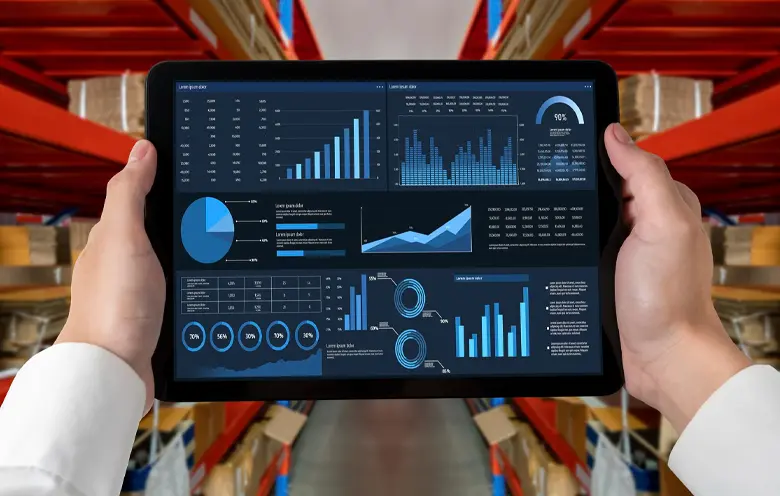Insurers capture vast volumes of data from critical touchpoints like policy records, claims histories, and customer interactions. It still remains a challenge for many to turn that raw information into actionable intelligence that is useful for proactive risk management.
Predictive analytics addresses this gap by running machine learning models across millions of policies and claims records in real time. These models uncover subtle fraud patterns, forecast future losses and personalize coverage significantly faster than manual reviews.
“The FBI estimates non-medical insurance fraud to be at least $40 billion every year.” – Texas Department of Insurance
That staggering number highlights both the urgency and the potential for proactive fraud detection. Predictive analytics combines historical claims, customer behavior, and external data to uncover anomalies in real time and strengthen risk controls. With the right data analytics partner, insurers can shift from reactive investigations to proactive fraud monitoring in just a few weeks.
In this blog post, we define predictive analytics in insurance, showcase key use cases, and outline core benefits to help you launch your analytics program.
What is predictive analytics in insurance?
Predictive analytics in insurance is the practice of applying statistical techniques and machine learning algorithms to historical and real time data such as policies, claims, customer interactions and telematics feeds to forecast the likelihood and impact of future events.
Instead of looking in the rear-view mirror, insurers use these forward-looking models to anticipate claim volumes, spot fraud patterns, and understand customer behavior before decisions are made.
Even the smallest percentage swing in loss ratio can significantly impact an insurer’s overall profitability. Predictive analytics gives underwriting, claims, and customer teams the foresight to price risk accurately, triage suspicious activity early, and tailor retention offers to high-value policyholders. By turning raw data into probability scores, it shortens reaction times and unlocks proactive actions that protect margins and improve customer experience.
To achieve those outcomes, insurers need a comprehensive analytics framework, not just algorithms. A successful program rests on three pillars: sound data preparation, robust modeling, and disciplined deployment with ongoing monitoring. The next sections explore how insurers apply these principles through real-world use cases and the business benefits they are already realizing.
How does predictive analytics works in insurance?
Predictive analytics transforms raw data into decision-ready insights through a disciplined, multi-stage process. By preparing high-quality data, training reliable models and embedding them into operational workflows, insurers can generate accurate forecasts that drive proactive actions.
-
Data preparation and feature engineering
Data teams clean, normalize and enrich the records consolidated from all sources. The team then creates features such as driver risk scores and weather-adjusted loss histories that feed directly into training pipelines.
-
Predictive modeling
Data scientists select algorithms like regression, decision trees or neural networks and train models on historical outcomes. They validate performance with hold-out data sets, fine-tune parameters, and run bias and fairness tests to get trustworthy predictions.
-
Deployment and performance monitoring
After validation, models are integrated into underwriting, claims, or customer platforms using machine learning operations pipelines. Insurers monitor model accuracy, track data drift, and schedule regular retraining or retirement to maintain predictive power over time.
Top 10 use cases of predictive analytics in insurance
Predictive analytics gives insurers the foresight to identify and mitigate risks, streamline processes and deliver more personalized service. Below are ten high-impact applications, each illustrated with a real-world example.
1. Fraud detection
Machine-learning models analyze claims details, adjuster notes and payment histories to surface suspicious patterns before payouts go out. This proactive approach cuts investigation costs and protects the loss ratio.
Lemonade’s “AI Jim” bot flags anomalous claims in seconds, achieving over 80 percent accuracy and halving manual review workloads.
2. Claims triage and severity prediction
At first notice of loss, algorithms score claim complexity using incident descriptions, photos and sensor data. High-severity cases route to senior adjusters while straightforward claims fast-track to settlement, speeding resolution and boosting customer satisfaction.
AXA’s severity-prediction system cuts average handling time by 25 percent by accurately prioritizing complex claims and reallocating resources.
3. Dynamic pricing and underwriting
Real-time risk scores drawn from telematics, credit records and location data enable personalized premiums that adjust to actual behavior. This data-driven pricing attracts low-risk customers and improves combined ratio without manual repricing.
Progressive’s Snapshot program tailors auto rates to driving habits, rewarding safe drivers with up to 30 percent discounts and growing its low-risk segment by 20 percent.
4. Customer churn prediction
Models examine policy tenure, service interactions and sentiment data to predict which customers may lapse. Early warnings trigger targeted retention offers, lowering attrition and preserving lifetime value.
Allstate’s churn-prediction tool identified at-risk policyholders three months before renewal, boosting retention by 15 percent and increasing cross-sell revenue by 10 percent.
5. Loss reserving accuracy
Time-series forecasts and advanced probabilistic models update reserve estimates with early claim indicators and economic data. Tighter reserves stabilize earnings and inform capital planning.
Munich Re’s Bayesian reserving models reduced reserve variability by 20 percent, enhancing financial transparency and investor confidence.
6. Catastrophe risk forecasting
Models that blend weather feeds, satellite images and geospatial analysis predict claim surges from hurricanes, floods or wildfires. Insurers use these insights to adjust reinsurance strategies and mobilize response teams ahead of storms.
Swiss Re’s catastrophe models forecast a major storm’s impact on coastal properties, enabling pre-event planning that cut post-storm claim processing time by 30 percent.
7. IoT-driven proactive maintenance
Smart home sensors and industrial devices stream equipment data to anomaly-detection models. When readings stray from normal ranges, the system issues a maintenance alert that prevents costly failures and lowers claim frequency.
Neos’s smart home insurance uses IoT sensors to detect leaks and shut off water automatically, reducing water damage claims by 40 percent and boosting customer satisfaction.
8. Litigation propensity scoring
Natural-language processing on legal records and claim histories enables models to predict which files may escalate to lawsuits. Early identification guides settlement strategies and optimizes legal spending.
A leading US carrier’s scoring tool cut litigation costs by 25 percent and reduced average case duration by 15 percent by focusing efforts on high-risk claims.
9. Marketing and cross-sell optimization
Statistical models examine customer profiles, policy records and engagement history to identify the best cross-sell opportunities. Targeted outreach improves campaign ROI and strengthens customer relationships.
USAA’s cross-sell analytics drove a 12 percent rise in add-on policy sales and improved email engagement by 20 percent through personalized offers.
10. Parametric and supply-chain disruption modeling
Models that track weather events, trade flows and supplier networks power parametric insurance triggers. Policies pay out automatically when defined conditions occur, providing fast, transparent relief for commercial clients.
Allianz’s parametric crop insurance pays out within hours based on rainfall sensor thresholds, helping farmers maintain cash flow during droughts.
6 benefits of implementing predictive analytics
Predictive analytics lifts performance on every major insurance metric, from loss ratio to customer loyalty. Below are six key benefits supported by authoritative industry data.
1. More accurate pricing
Predictive models help insurers price risk more precisely, enabling competitive premiums without sacrificing margin. Carriers that switch from manual rating tables to predictive algorithms have cut loss ratios by three to eight percentage points, according to a Swiss Re digitalization study.
2. Faster claims resolution
Automated claim scoring prioritizes high severity cases and accelerates settlements, improving customer satisfaction and reducing backlog. Insights from Verisk show that machine learning dashboards shortened claim cycle times by up to thirty-five days for early-adopting carriers.
3. Lower operating expenses
Streamlined workflows and automated routine tasks free teams to focus on complex issues, cutting administrative costs. Swiss Re research finds automating underwriting and back-office processes can trim operating expenses by up to twenty percent.
4. Improved customer retention
Early warning models identify policyholders at risk of lapsing, enabling targeted outreach that secures renewals. Insurers using predictive churn analytics report a twenty-three percent lift in customer lifetime value, per the 2024 Insurance Customer Loyalty Report.
5. Better capital efficiency
Data-driven reserve estimates reduce variability and free capital for growth and reinsurance. Swiss Re’s 2025 U.S. P&C outlook credits a one-percentage-point improvement in loss ratio to analytics-guided reserving.
6. Faster product updates
Modern rating engines allow insurers to roll out price changes and new products swiftly, capturing emerging market opportunities. Celent research shows analytics-driven platforms cut pricing revisions from six-plus months to under twenty-four hours.
Together these gains compound, sharpening pricing, cutting expenses and accelerating product launches to make predictive analytics a true growth driver rather than just a risk tool.
Embed predictive analytics solutions into everyday workflows
With a clear view of predictive analytics in insurance, insurers can assess data readiness, prioritize high-impact use cases, and launch focused pilots with defined success metrics. By bringing underwriting, claims and IT teams together, establishing governance processes and monitoring key performance indicators, insurers can refine models over time and embed analytics in decision-making. Building on early successes will enable expansion across additional products, geographies and business functions.
Softweb Solutions’ predictive analytics services deliver data engineering, modeling expertise and production-grade MLOps pipelines that insurers need to drive reliable insights at scale. Our team partners with carriers to ensure compliance, foster user adoption, and integrate analytics into core operations. Contact us today to schedule a consultation and explore how predictive analytics can sharpen your risk controls and drive sustainable growth.
FAQs
1. Is predictive analytics suitable for all types of insurance?
Yes, predictive analytics is suitable for all insurance lines, tapping into the unique data each line produces. It can use telematics in auto, weather and claims data in property, mortality tables in life, and provider network insights in health to sharpen pricing, improve risk management and enhance customer loyalty.
2. Can predictive analytics reduce insurance fraud?
Yes, machine-learning algorithms learn from past fraud incidents to flag anomalous patterns in claims, payments, and customer behavior before payouts occur. Over time, these models improve detection accuracy and lower false-positive rates, reducing investigation costs and operational overhead.
3. What data is required for predictive analytics in insurance?
Two types of insurance data is required for predictive analytics:
- Customer and policy data: demographics, transactions, sentiment and behavior.
- Contextual data: telematics, weather feeds, credit information and social insights. A solid governance framework keeps both sets reliable for model training.
4. What’s the difference between predictive analytics and predictive modeling in insurance?
Predictive analytics covers the full lifecycle of data preparation, modeling and deployment to drive forward-looking insights. Predictive modeling is one stage within that cycle focused on training and validating statistical or machine-learning models. In practice, modeling transforms prepared data into risk scores that feed into underwriting, pricing, and claims workflows.
5. Which technologies are commonly used for predictive analytics in insurance?
Insurers build analytics solutions with frameworks such as Scikit-learn, TensorFlow and PyTorch, alongside big-data platforms like Apache Spark or Databricks. Cloud services from AWS, Azure, and GCP provide data warehousing, analytics, and MLOps capabilities. Natural-language processing libraries, anomaly-detection toolkits and API integrations round out the technology stack.
6. What are the challenges in implementing predictive analytics in insurance?
Common barriers include inconsistent or siloed data, legacy system dependencies, and regulatory demands for transparency. Carriers also face skill gaps in data science and resistance to change. The right technology partner can help you overcome data silos, legacy systems and regulatory hurdles by providing governance frameworks, explainable-AI tools and cross-functional training.
7. How can an insurance company get started with predictive analytics?
Begin by evaluating your current data environment and selecting a pilot use case with clear ROI, such as fraud detection or pricing optimization. Next, form a cross-functional team of underwriters, claims specialists and data analysts to run a time-limited proof of concept. Review initial results, refine your approach and expand analytics in phases across additional products and regions.
8. Why should insurance businesses invest in predictive analytics?
Predictive analytics transforms data into proactive insights, leading to faster claims resolution, more accurate pricing and improved customer loyalty. These advantages translate into measurable ROI through reduced loss ratios, lower operating costs and higher renewal rates. By investing in analytics, insurers also gain the agility needed to innovate offerings and adapt to market changes.
9. What is the future of predictive analytics in the insurance industry?
The future is connected, intelligent and real time. Streaming data, edge AI and digital twins will enable instant underwriting and claims decisions. Automated machine learning will open modeling to non-data-scientists, while stronger explainability tools will satisfy regulators.
10. What are the ROI drivers for predictive analytics in insurance?
Key drivers include improved underwriting accuracy, lower fraud losses, operational efficiency gains and higher retention rates. Insurers also benefit from faster decision making and accelerated product rollouts, turning analytics investments into sustained growth.
11. What is predictive modeling in insurance, and how is it used within predictive analytics?
Predictive modeling in insurance refers to training, validating, and deploying statistical or machine-learning models that estimate outcomes like claim severity or policy lapse. Within the broader predictive analytics framework, these models convert data into actionable risk scores. Those scores then inform underwriting, pricing and claims decisions for automated support.



